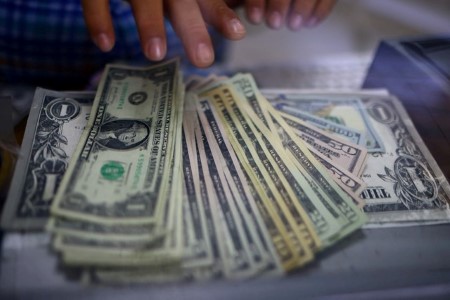




Monthly Economic Update: One for the road
 DOWNLOAD
DOWNLOAD

Inflation Update: Still low, still slow
 DOWNLOAD
DOWNLOAD

Philippines Trade Update: Exports momentum continues
 DOWNLOAD
DOWNLOAD


US yields rise as central banks push back on rate cuts

NEW YORK, Jan 16 – US Treasury yields rose on Tuesday, reversing the bullish tone at the end of last week after central bankers in Europe and the United States pushed back against market expectations of imminent interest rate cuts.
Yields, which move inversely to prices, were higher across the curve after weakness in European bonds on Monday spurred by European Central Bank officials pushing back on market bets on rate cuts. US markets were closed on Monday for a national holiday.
A report over the weekend showed Atlanta Fed President Raphael Bostic said inflation could “see-saw” if the central bank cuts rates too soon. Meanwhile, on Tuesday, Fed Governor Christopher Waller said the path of policy change must be carefully calibrated, not rushed.
Fed funds futures traders on Tuesday were pricing for over 150 basis points in rate cuts this year, but assigned a 60% chance of a rate cut in March after Waller’s speech, down from about 70% earlier.
The mismatch between market expectations and indications from the Federal Reserve, which has penciled in 75 basis points of cuts in 2024, is likely to continue to cause swings in yields, said Doug Huber, vice president for investment strategies at Wealth Enhancement Group.
“There’s the questions of when rates get cut and how many are there … to us that will set us up for an environment where we’re anticipating more volatility in rates,” he said.
While higher compared to their close last week, yields declined on Monday after the New York Federal Reserve’s Empire Manufacturing survey came much lower than expected.
Benchmark 10-year yields were last seen at 4.037%, up from a 3.95% close last week. Two-year yields, which more closely reflect monetary policy expectations, were at about 4.21%, up from 4.138% on Friday.
The curve comparing two and 10-year yields steepened to minus 17.8 basis points, the least inverted it has been since early November. That part of the Treasury yield curve, when inverted, is generally seen as a sign of an upcoming recession.
(Reporting by Davide Barbuscia; Editing by Nick Zieminski and Jonathan Oatis)
This article originally appeared on reuters.com





 By Reuters
By Reuters